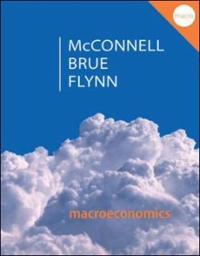Provide solutions to the following
Question 3 Value a 1.5-year swap, with swap rate 5.52%. The floating leg is referenced to the 6-month LIBOR, which is at 6% per annum. Notional is 100 million. Use the following discount factors: T Z(0,T) 0.25 0.9848 0.50 0.9745 0.75 0.9618 1.00 0.9490 1.25 0.9353 1.50 0.9215 You are told that this swap is at initiation. What is the payment frequency of the fixed leg on the swap, quarterly or semiannually? Please show all assumptions and calculations. Question 4 Consider the same swap as in Question 3. What is the value of the swap three months after initiation, where the discount factors are now: T Z(0,T) 0.25 0.9840 0.50 0.9680 0.75 0.9520 1.00 0.9360 1.25 0.9190 1.50 0.90405. Consider a complete one-period model with ? = {w1, w2, w3, wa} and let VI, V2, V3, and V4 denote the Arrow-Debru securities with payment functions vi (w ) = 1 0 w / wi. Assume that the initial prices of these securities are VJ = $0.38, V. = $0.095, VS = $0.19, Vi = $0.285. (a) Find the arbitrage-free price Wo of the derivative security W with payment function W1 given by WI(w1) = 14, W1(w2) = 3, Wi(w3) = 0, W1(wA) = -6. (b) Determine the interest rate r. 6. Consider a one-period model with ? = {w1, w2, . ..,wx}. Let VI, V2, ..., VN denote the Arrow-Debru securities which make payments W = WA vi(w) = jo w/ wi Assume that the prices Val, V., ..., VN of the Arrow-Debru securities at time t = 0 are known. (a) Let Vi P ( wi ) = VI + V 2 + ... + VN. gives a risk-neutral probability measure P. (b) Is this the only risk-neutral probability measure in this model, or could there be others?4. You are a U.S.-based company that just imported some raw materials for (200,000 from France. You owe (200,000 to the French supplier in one year. You are concerned about the amount in dollars you will have to pay for this purchase in one year. Suppose: Current Spot exchange rate is $1.50/E One-year Forward exchange rate is $1.25/( U.S. interest rate is 3.00% per year Interest rate in Europe is 4.00% per year Call option with strike price of $1.30/6 is available with premium of $0.1/E Put option with strike price of $1.30/C is available with premium of $0.2/E You forecast that the spot exchange rate in one year could be $1.20/6, $1.30/E, $1.40/6, or $1.50/6 with equal probability. a. Suppose you decide to do nothing. In one year, what will be the dollar cost in the four possible scenarios? (2 points) b. Explain in detail how you can lock in the exact dollar cost of this purchase by using forward contract. Specifically, do you take a long or short position in a E forward contract and for how much amount? What dollar cost can you lock in with this strategy? (4 points) c. Explain in detail how you can lock hedge your position using money market hedge. Write down the detailed steps one needs to take to implement the money market hedge and calculate the dollar cost in each of the four scenarios. (6 points) d. Explain in detail how you can hedge using option. Should you take a long or short position in put or call options on euros? Write down whether you will exercise the option (i.e., is it in the money, at the money, or out of the money?) and calculate the dollar cost (including option premium you paid) in each of the four possible scenarios. (6 points) Hint: at the end, provide a table that summarizes the dollar cost in each scenario like the following: State Future spot rate Cost in Euro Unhedged Forward Money Market |Option 1 1.2 200,000.00 2 1.3 200,000.00 3 1.4 200,000.00 4 1.5 200,000.00QUESTION ONE One of the economic impacts of the current covid -19 pandemic is a rise in demand deficient unemployment. i) Explain how fiscal policy can be used to solve this problem. (5 marks) i) How can monetary policy be used to address the same problem. (5 marks) iii) Explain the links between changes in the nation's money supply, the interest rate, investment spending, aggregate demand and real GDP. Illustrate with a graph where appropriate (5 marks) iv) Discuss the negative redistributive effects of unanticipated inflation on any three groups/agents in the economy. (5 marks) v) Which of the two types of inflation is most likely to be associated with a negative GDP gap? Illustrate with a graph. (5 marks) vi) During World War II, an Allied soldier named Robert Radford spent several years in a large German prisoner-of-war (POW) camp. At times more than 50,000 prisoners were held in the camp, with some freedom to move about within the compound. Radford later wrote an account of his experiences. He described how an economy developed in the camp, in which prisoners traded food, clothing, and other items. Services such as barbering also were exchanged. Lacking paper money, the prisoners began to use cigarettes (provided monthly by the Red Cross) as money. Prices were quoted, and payments made, using cigarettes. (a) In Radford's POW camp, explain how cigarettes fulfilled the three main functions of money (3 marks) [b) Briefly discuss why a non-smoking prisoner would have been willing to accept cigarettes in exchange for a good or service in Radford's camp. (2 marks)










